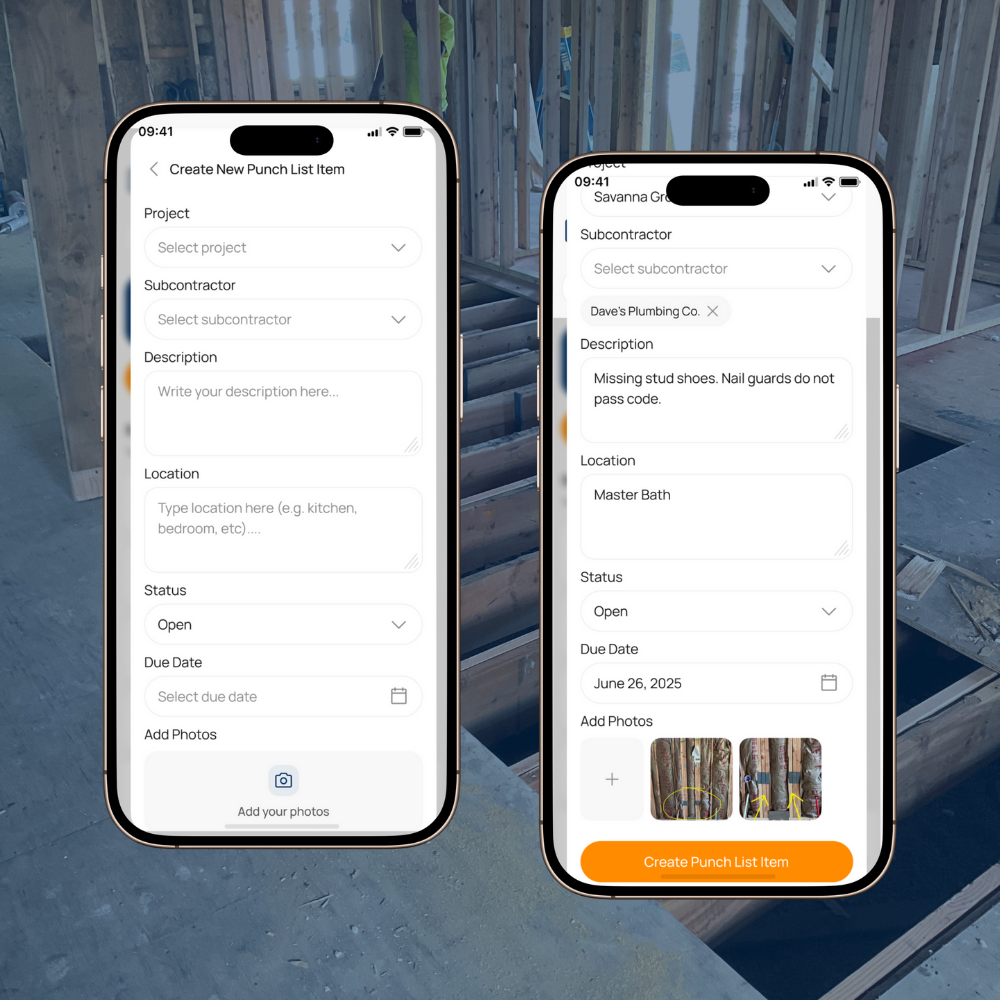From Afterthought to Advantage: Using Punch Lists Throughout a Project
Punch lists have long been treated as a closeout task—a final sweep to identify and correct deficiencies before turning a project over to the client. But if you’re only breaking out the punch list in the last week of construction, you’re missing its real power.
The most efficient builders and general contractors are flipping the script—making the punch list a living document from day one. This approach keeps jobsites cleaner, reduces rework, and accelerates the final handoff.
Why the Old Way Falls Short
Traditionally, the punch list shows up late in the game. By then, the jobsite is busy with finish work, inspections, and client walkthroughs. Last-minute fixes compete with final deliverables, often causing:
Missed deadlines due to unexpected issues
Stressed crews rushing to complete work
Unhappy clients spotting problems before you do
When you save all corrections for the end, you’re essentially compressing weeks of quality control into a few days. That’s a recipe for delays and callbacks.
Making the Punch List a Daily Tool
By introducing a punch list early in the project, you turn it into a proactive management tool instead of a reactive checklist.
From the first week on site, you can:
Log issues immediately so they don’t pile up
Assign fixes to the right trade while they’re still on-site
Attach photos for clarity and accountability
Track completion in real time without waiting for end-of-project inspections
This shifts the culture from “we’ll fix it later” to “we fix it now.”
The Benefits of Early Punch List Use
Cleaner Jobsites
Small issues are addressed quickly, preventing clutter and hazards.
Fewer Callbacks
Problems are solved when they’re spotted, reducing post-completion repairs.
Better Crew Morale
Trades know expectations are clear and that issues won’t be left to snowball.
Faster Closeouts
By the time you reach the finish line, there’s little left to correct.
How a Mobile Punch List App Makes It Easy
Using a paper list or a spreadsheet for a daily punch list is cumbersome. Even if you start with a free punch list template to organize tasks, it still requires constant manual updates and version control. That’s why many builders move to a mobile punch list app like PunchPad—it keeps everything live, accurate, and visible without emailing updated files around.
Add items directly from your phone during walkthroughs
Share a live link with subcontractors—no app or login required for them
Update statuses instantly so everyone sees progress in real time
No retyping notes. No emailing updated spreadsheets. Just fast, clear communication. With PunchPad, you can share punch lists with photos attached so subs know exactly what to fix.
Real-World Examples of Mid-Construction Punch Lists in Action
Catching issues early is where a mid-construction punch list proves its value. Here are a few real-world scenarios where logging items before closeout saved time, money, and frustration:
Framing stage – During a walkthrough, the superintendent spots a header that’s undersized for a window opening. It’s logged immediately and assigned to the framing crew while they’re still on site, avoiding a costly drywall tear-out later.
Rough-in stage – An electrician runs a conduit through a stud bay that the HVAC duct is slated to use. The conflict is photographed, logged, and reassigned to the electrician before insulation goes in.
Exterior phase – Siding installers skip flashing on a small bump-out. It’s caught during a weekly inspection, added to the punch list, and fixed before the scaffold is removed, saving the cost of a return setup.
Interior finishes – A tile installer chips a corner of a backsplash tile. The damage is noted and a replacement is ordered immediately, arriving before final grouting so the whole wall doesn’t need to be redone.
Final weeks – Paint touch-ups, cabinet adjustments, and door hardware alignment issues are logged as they’re spotted, keeping the closeout list short and client walk-through clean.
Creating and assigning punch list items in PunchPad, complete with descriptions, locations, due dates, and photos.
Putting It Into Practice
Start your next project with a punch list on day one. Walk the site daily or weekly, logging anything that needs attention. Assign it, track it, and keep it moving. By closeout, your list will be short, your client happy, and your schedule intact.
Closeout goes smoother when you rely on a punch list app with photo tracking.
Ready to stop treating punch lists as an afterthought?
Try PunchPad free and turn every punch list into a project advantage.

